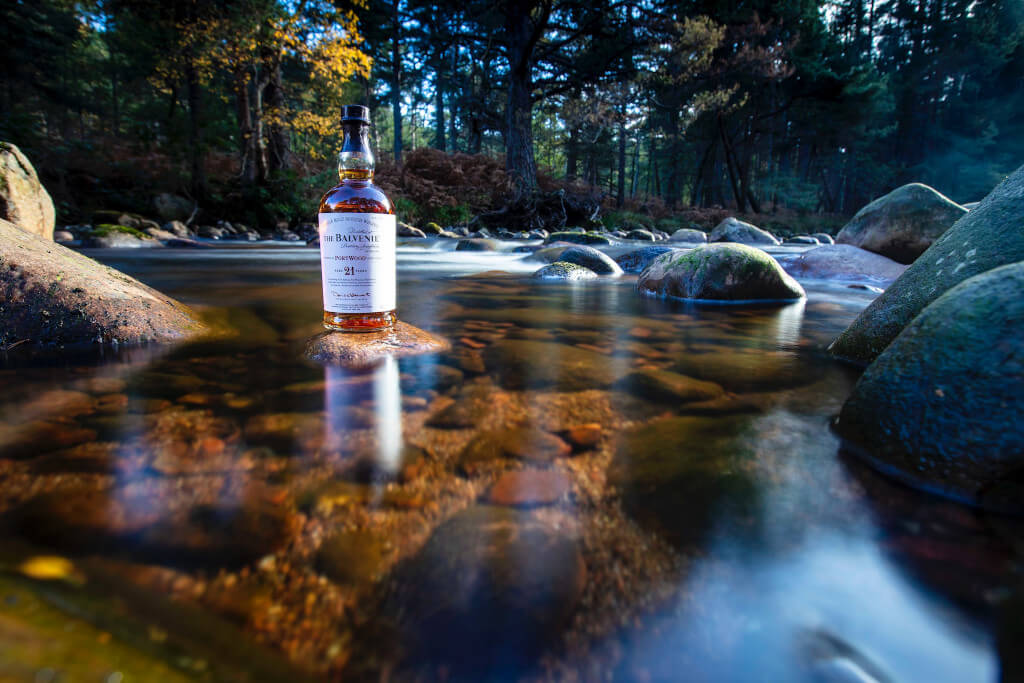Learning to Bridge Geographic Gaps
You may have heard rumors about the historic whisky districts of Scotland, and it’s reasonable to suppose that these places have some bearing on the whisky’s flavor. But the reality is much more intriguing.
- There are five official whisky-producing regions in Scotland: the Lowlands, Highlands, Speyside, Islay, and Campbeltown. Campbeltown and Islay are two such areas that have clear-cut political and geographical borders. Some, like Scotland’s Highlands and Lowlands, are more complicated than they need to be because they were created for tax purposes. For instance, the division between Scotland’s Highlands and Lowlands wasn’t imposed by the country’s topography but rather was made artificially in the 19th century for financial reasons. While flavors don’t strictly adhere to regional boundaries, a closer look at Scotland’s five official whisky regions can give you a bit of guidance.
Highland whiskies encompass a vast area, making them incredibly varied. As you taste them, you’ll notice that while some are robust with dark fruit undertones, others might lean more toward floral notes. They could be salty and coastal, or even peaty. For example, while you might expect a warming, full-bodied sip from a Dalmore, a Clynelish might surprise you with its lighter, waxy character.
Then there’s Speyside, often mistaken as a flavor profile rather than a region. It houses numerous distilleries, each offering its unique signature. You might relish the fruity notes of a Glenfiddich or savor the meaty kick from a Mortlach. But to assume they all taste similar because they’re from Speyside? That’s like expecting every pizza in New York to be identical.
As you venture to Islay, be ready for some smoky punches. While it’s true that many whiskies from Islay bear a robust, peaty character – think Laphroaig or Ardbeg – it’s essential to remember that there are exceptions. A Bunnahabhain, for instance, might be notably unpeated and offer a refreshing break from the smoky norm.
Lowland whiskies often get typecast as being exclusively light and delicate. But be prepared for some surprises here too. Sure, an Auchentoshan might dance gracefully on your palate, but a Bladnoch could very well bring with it a rich, commanding presence.
Don’t let Campbeltown Whiskies fool you with their maritime reputation. Yes, many might offer those seaside, briny notes. But now and then, a Glen Scotia might remind you of a tropical vacation with its fruity hints.
The Myth of Flavour Debunked
If you immerse yourself in the whisky scene, you’ll quickly learn that a whisky’s taste isn’t necessarily determined by where it was produced. It would be a mistake, for instance, to assume that all whiskies from the Speyside region have the same flavor profile. But are you sure that all the local libations share the same flavor profile, from Glenfiddich to Mortlach? It’s like asking all New York artists to create identical works of art.
- All Islay Whiskies are Peaty and Smoky
- The Myth: If it’s from Islay, it must be smoky and peaty.
- The Reality: While Islay is renowned for its robust, smoky single malts thanks to brands like Laphroaig and Ardbeg, not all its whiskies bear this signature. Bunnahabhain, for example, often releases notably unpeated expressions. It’s a reminder that there’s more to Islay than peat bogs and smoky drams.
- Highland Whiskies are Always Bold and Robust
- The Myth: The Highland region, given its vastness, produces whiskies that are uniformly strong and bold.
- The Reality: The Highlands is Scotland’s largest whisky-producing region, spanning from coastal areas to mountainous terrains. This vastness brings diversity. While Dalmore might give you dark fruit and spice, Clynelish often leans towards a waxy, floral profile.
- Lowland Whiskies are Always Light and Grassy
- The Myth: If you’re looking for a light, almost delicate whisky, pick one from the Lowlands.
- The Reality: While many Lowland whiskies, like Auchentoshan, do present a lighter profile, it’s not a blanket rule. Bladnoch, for instance, offers some rich, full-bodied expressions, demonstrating that the Lowlands can pack a punch too.
- Campbeltown Whiskies are Uniformly Maritime and Briny
- The Myth: Nestled on the Kintyre Peninsula, Campbeltown whiskies have a predominantly maritime character.
- The Reality: While the saline sea air undoubtedly influences some of the expressions from this region, there’s more variety than one might assume. Take Glen Scotia, which sometimes surprises with its hints of tropical fruit alongside the expected brine.
- Terroir Doesn’t Matter in Whisky As it Does in Wine
- The Myth: Unlike wine, where the plot of land (terroir) influences flavor distinctly, whisky is more about the process than the place.
- The Reality: While the distillation process, aging, and cask selection play monumental roles in flavor development, the terroir, including the water source, barley type, and even the microclimate, can influence a whisky’s profile. Distilleries like Bruichladdich have championed the idea of terroir in whisky, showcasing the nuances different barley varieties can bring to the table.
Historical Perspective: The Importance of Place

Then, what is the purpose of dividing the world into several areas? The beginnings can be traced back to the mixing culture of the 19th century. Whisky blenders, the industry’s equivalent of a fine artist, would use these locations as umbrella flavor categories to guide their work. They found that Islay whiskies typically had a smokey quality, while Campbeltown whiskies were typically more robust and oily. The system used a color pallet. These places became a standard reference for single malt fans as their popularity grew. Instead of focusing on pinpointing certain flavors, the event highlighted the breadth and depth of Scotch whisky.
However, as time progressed, attention switched from geographical markers to distillery fingerprints. And that’s the secret to its enchantment. Each distillery has its character. It’s like how wines from different parts of Bordeaux’s vineyards would have distinct nuances and levels of complexity while all being grown in the same general area.
Thinking Outside the Box
Avoid focusing solely on its place of origin while enjoying a fine Scotch. Consider the breweries, the artisans, and the experiences they share. Is the smokey flavor a result of using peat from a certain region, or did the distillery intentionally add that flavor? Always think about the distiller while choosing a whisky.
Consider two local distilleries as an example. One may be handed down across families, with each member contributing their unique style. The other option could be a more recent business that is aiming to differentiate itself through the use of some novel technique or substance. The stories go on forever, and the flavors come in a wide variety.
Accept the Challenge
Use the areas as a point of departure as you learn about Scotch, but make the distilleries your final destination. There’s an anecdote to be had with every bottle you open. When you pour yourself a dram the next time, keep in mind that it’s not just about the way it tastes; it’s also about the stories it tells, straight from the heart of Scotland.

